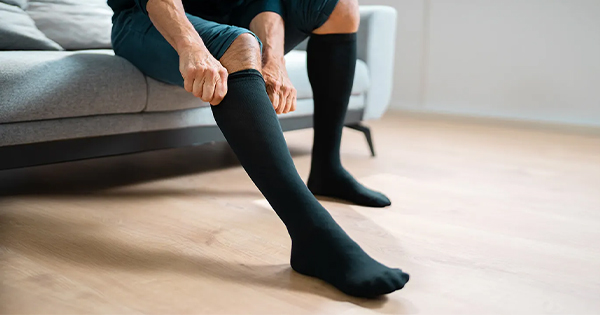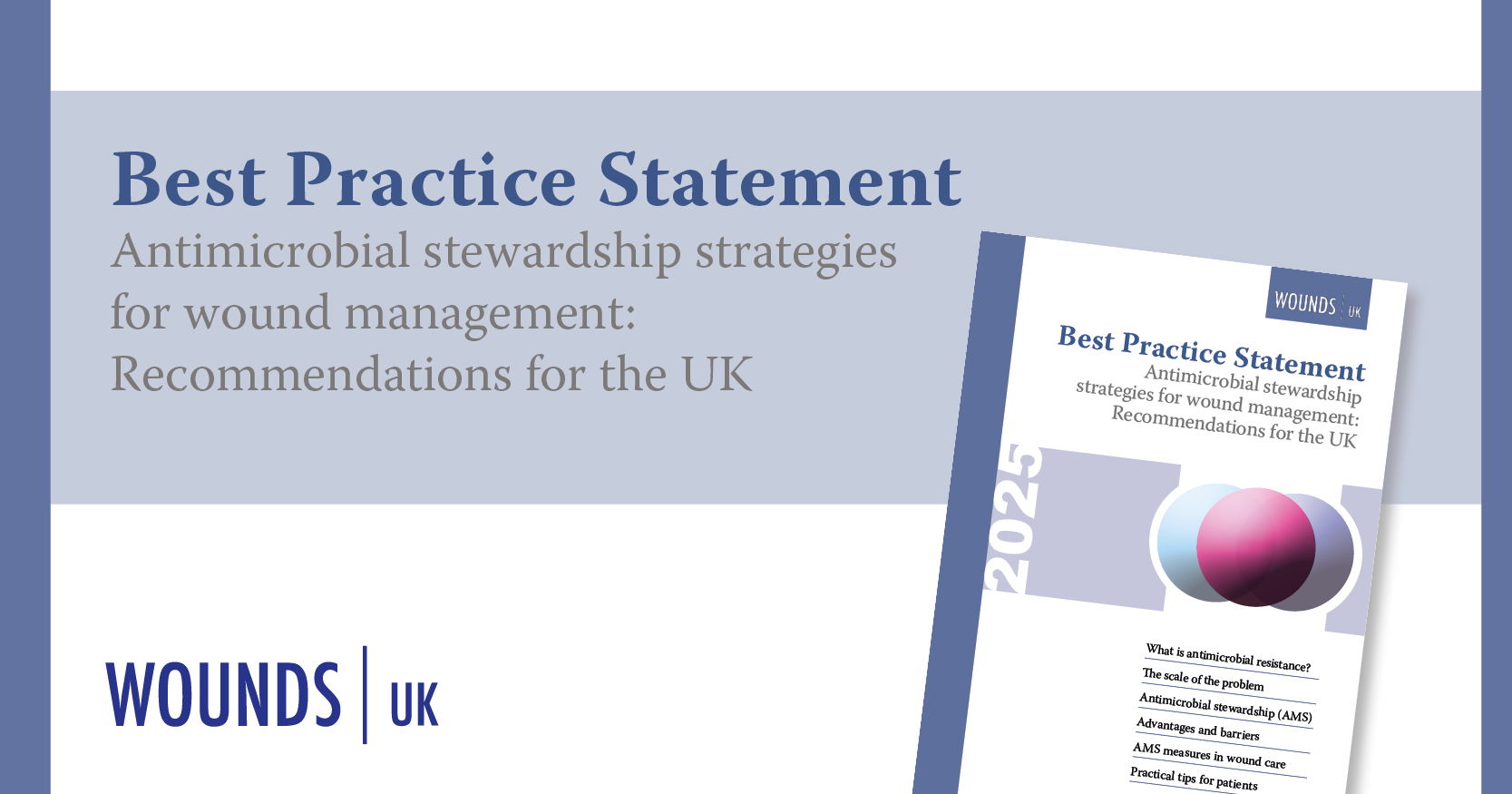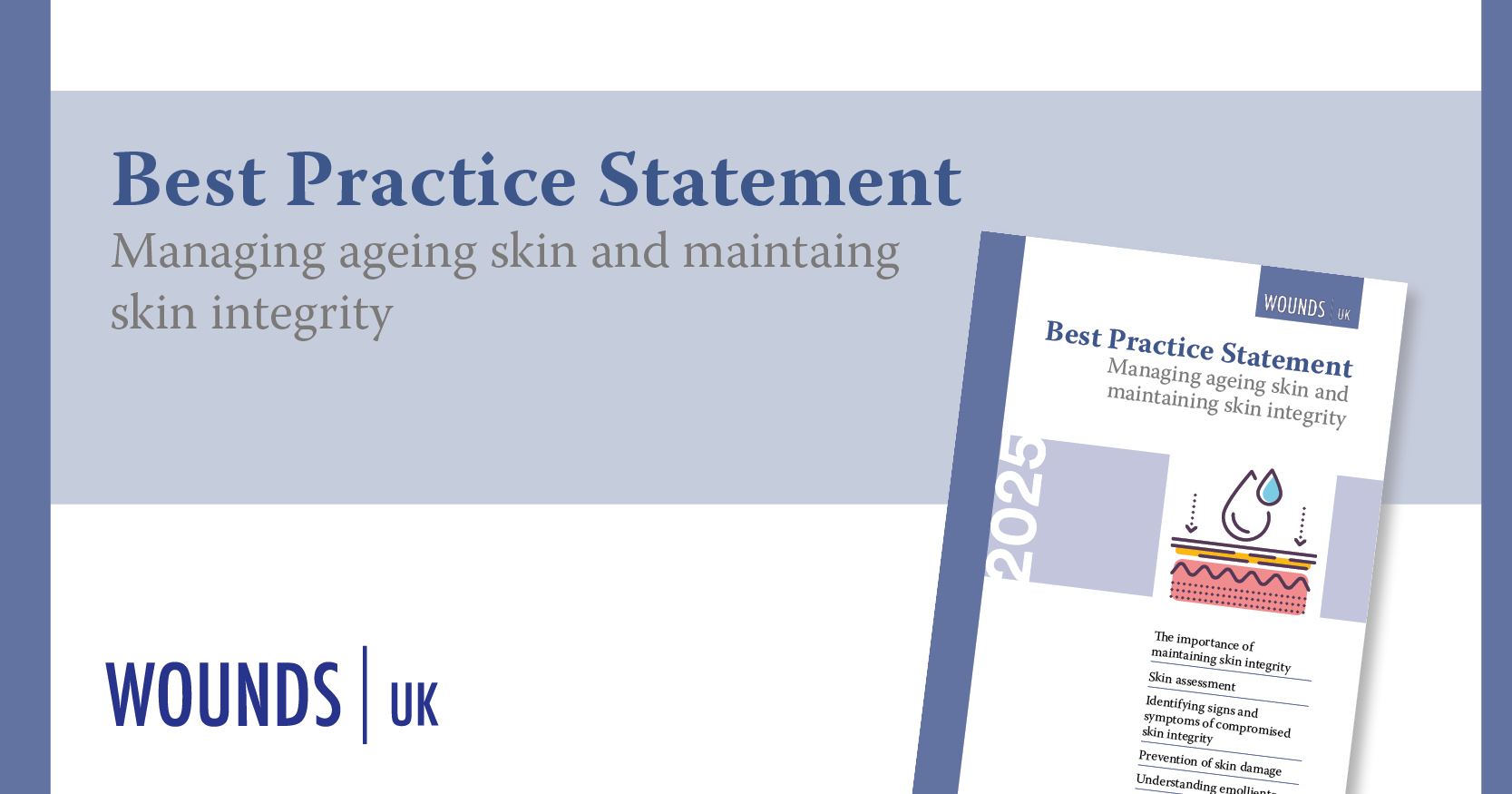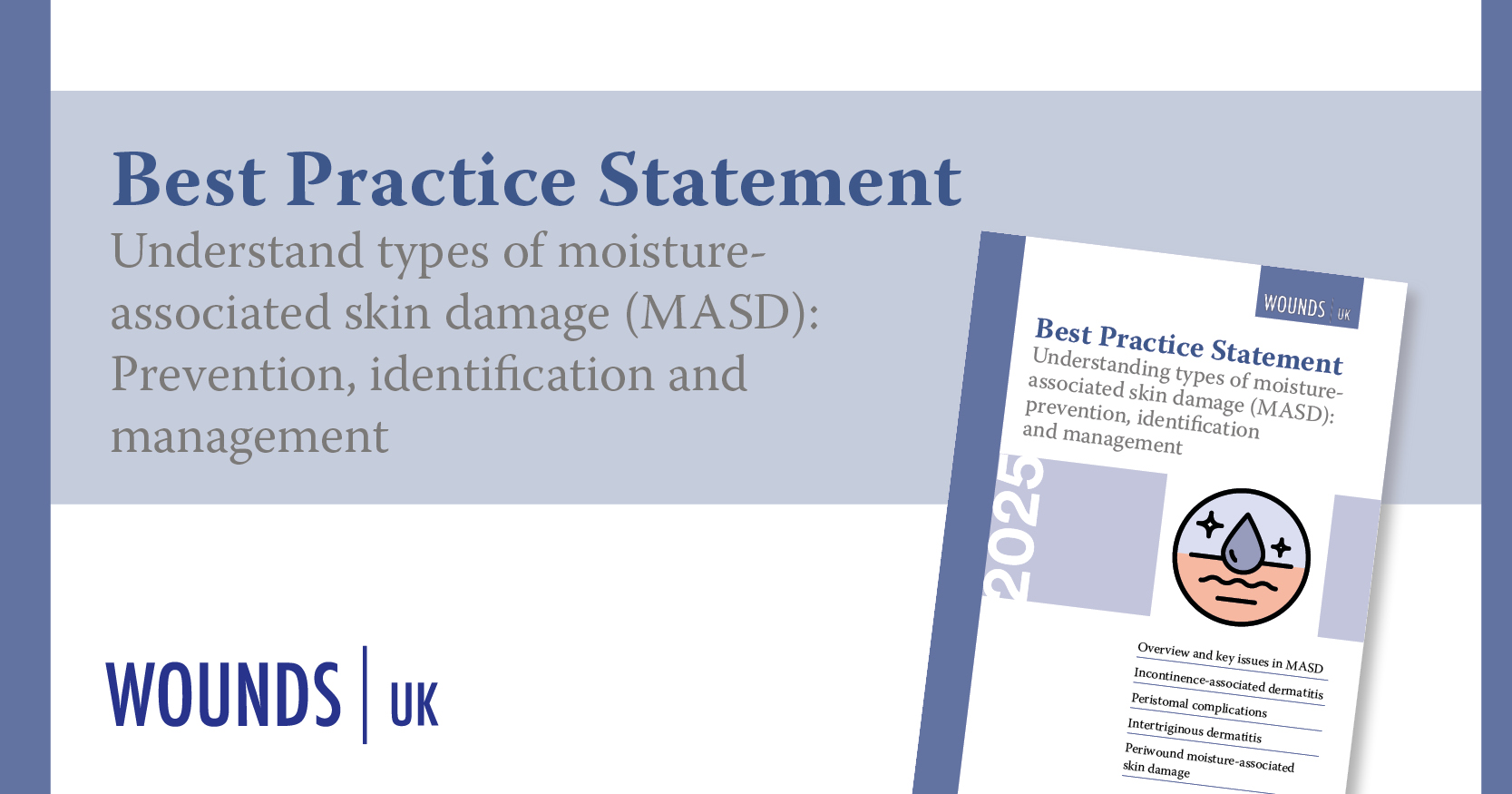ReferencesAmbrosy AP, Fonarow GC, Butler J et al (2014) The global health and economic burden of hospitalizations for heart failure: lessons learned from hospitalized heart failure registries. Journal of the American College of Cardiology 63: 1123–33
American Heart Association (2017) Classes of Heart Failure. Available at: https://www.heart.org/en/health-topics/heart-failure/what-is-heart-failure/classes-of-heart-failure
Atkin L, Byrom R (2022) The links between heart failure and leg oedema: the importance of compression therapy. Wounds UK
Blake I (2019) Heart failure hospital admissions rise by a third in five years. Available at: https://www.bhf.org.uk/what-we-do/news-from-the-bhf/news-archive/2019/november/heart-failure-hospital-admissions-rise-by-a-third-in-five-years
Bleumink GS, Knetsch AM, Sturkenboom MC et al (2004) Quantifying the heart failure epidemic: prevalence, incidence rate, lifetime risk and prognosis of heart failure. The Rotterdam Study. European Heart Journal 25: 1614–9
Bozkurt B, Coats AJS, Tsutsui H et al (2021) Universal definition and classification of heart failure: a report of the Heart Failure Society of America, Heart Failure Association of the European Society of Cardiology, Japanese Heart Failure Society and Writing Committee of the Universal Definition of Heart Failure: Endorsed by the Canadian Heart Failure Society, Heart Failure Association of India, Cardiac Society of Australia and New Zealand, and Chinese Heart Failure Association. Eur J Heart Fail 23(3): 352-80
British Heart Foundation (2022) Heart Failure. Available at: https://www.bhf.org.uk/informationsupport/conditions/heart-failure (accessed 02.02.2023)
British Lymphology Society (BLS) (2019) Position paper for assessing vascular status in the presence of chronic oedema prior to the application of compression hosiery. Available at: https://www.thebls.com/documents-library/assessing-vascular-statusin-the-presence-of-chronicoedema-priorto-theapplication-of-compression-hosiery-positiondocument-toguide-decision-making-a5
Bromage D, Joseph MJ, Sado D (2020) Managing heart failure related peripheral oedema in primary care. BMJ 369: m2099
Centers for Disease Control and Prevention (2020) Prevent Heart Disease. Available at: https://www.cdc.gov/heartdisease/prevention.htm (accessed 02.02.2023)
Conrad N, Judge A, Tran J et al (2018) Temporal trends and patterns in heart failure incidence: a population-based study of 4 million individuals. The Lancet 391: 10120
Danielsen R, Thorgeirsson G, Einarsson H et al (2017) Prevalence of heart failure in the elderly and future projections: the AGES-Reykjavík study. Scandinavian Cardiovascular Journal 51: 183–9
Fletcher J, Atkin L, Bolton L et al (2021) Best Practice Statement Compression hosiery: A patient-centric approach. Wounds UK
Grange J (2005) The role of nurses in the management of heart failure. Heart 91(2): 48
Guttormsen K, Smith L (2016) What is an ankle brachial pressure index? Wound Essentials 11(1): 22-5
Hajouli S, Ludhwani D (2022) Heart Failure And Ejection Fraction. Available at: https://www.ncbi.nlm.nih.gov/books/NBK553115/
Harding K, Dowsett C, Fias L et al (2015) Simplifying venous leg ulcer management: consensus recommendations. Wounds International
Hirsch T (2018) Oedema drainage and cardiac insufficiency—When is there a contraindication for compression and manual lymphatic drainage? Phlebologie 47: 115–9
Hobbs FD, Kenkre JE, Roalfe AK et al (2002) Impact of heart failure and left ventricular systolic dysfunction on quality of life: a cross-sectional study comparing common chronic cardiac and medical disorders and a representative adult population. European Heart Journal 23: 1867–76
Hoes AW, Mosterd A, Grobbee DE (1998) An epidemic of heart failure? Recent evidence from Europe. European Heart Journal 19: L2–9
Huxel C, Raja A, Ollivierre-Lawrence MD (2022) Loop Diuretics. Available at: https://www.ncbi.nlm.nih.gov/books/NBK546656/
King M, Kingery J, Casey B (2012) Diagnosis and evaluation of heart failure. Am Fam Physician 85(12): 1161-8
Malik A, Brito D, Vaqar S et al (2022) Congestive Heart Failure. Available from: https://www.ncbi.nlm.nih.gov/books/NBK430873/
Mant J, Doust J, Roalfe A et al (2009) Systematic review and individual patient data meta-analysis of diagnosis of heart failure, with modelling of implications of different diagnostic strategies in primary care. Health Technology Assessment 13: 1–207
Mayo Foundation for Medical Education and Research (2020) Available at: http://www.mayoclinic.com/health/edema/DS01035
McDonagh TA, Metra M, Adamo, M et al (2021) 2021 ESC Guidelines for the diagnosis and treatment of acute and chronic heart failure. European Journal of Heart Failure 24(1): 4-131
Montero EC, Perrucho NS, Dobao P de la Cueva (2020) Theory and Practice of Compression Therapy for Treating and Preventing Venous Ulcers. Actas Dermosifiliogr (Engl Ed) 111(10): 829-34
National Institute for Cardiovascular Outcomes Research (NICOR) (2019) Available at: https://www.nicor.org.uk/wp-content/uploads/2019/09/Heart-Failure-2019-Report-final.pdf
National Institute for Health and Care Excellence (NICE) (2018) Available at: https://www.nice.org.uk/guidance/ng106/chapter/Recommendations#diagnosing-heart-failuresummary-guide.pdf (accessed 21 November 2022)
National Wound Care Strategy Programme (NWCSP) (2021) Recommendations for lower limb ulcers. Available at: https://www.nationalwoundcarestrategy.net/wpcontent/uploads/2021/04/Lower-Limb-Recommendations-WEB-25Feb21.pdf
NHS England (2022a) Social prescribing. Available at: https://www.england.nhs.uk/personalisedcare/social-prescribing/ (accessed 21 November 2022)
NHS England (2022b) Health and wellbeing coaches. Available at: https://www.england.nhs.uk/personalisedcare/supported-self-management/health-and-wellbeing-coaches/ (accessed 21 November 2022)
NHS England (2022c) Care and support you can get for free. Available at: https://www.nhs.uk/conditions/social-care-and-support-guide/care-services-equipment-and-care-homes/care-and-support-you-can-get-for-free/ (accessed 21 November 2022)
Office for Health improvements & Disparities (2022) Social prescribing: applying All Our Health. Available at: https://www.gov.uk/government/publications/social-prescribing-applying-all-our-health/social-prescribing-applying-all-our-health (accessed 21 November 2022)
O’Meara SO, Cullum N, Nelson AE, Dumville JC (2012) Compression for venous leg ulcers. Cochrane Database Syst Rev 11(11): CD000265
Ousey K, Atkin L, Conway B et al (2021) Compression therapy for pharmacy teams. Wounds UK
PAGB (2016) Self Care Nation. Available at: https://www.pagb.co.uk/content/uploads/2016/11/PAGB-SELF-CARE-NATION-REPORT-NOVEMBER-2016-1.pdf (accessed 15 December 2022)
Penn Medicine (2022) Heart Failure Classification – Stages of Heart Failure and Their Treatments. Available at: https://www.pennmedicine.org/updates/blogs/heart-and-vascular-blog/2014/september/heart-failure-classification–stages-of-heart-failure-and-their-treatments
Pumping Marvellous (2021) My Marvellous Symptom Checker. Available at: https://pumpingmarvellous.org/wp-content/uploads/2016/05/Heart-Failure-in-Lights-RAG-Sheet.pdf (accessed 15.03.2023)
Queen and Harding (2022) COVID-19 consequences in the management of persons with wounds. Int Wound J 19: 237-8
Rabe E, Partsch H, Morrison N, et al (2020) Risks and contraindications of medical compression treatment – A critical reappraisal. An international consensus statement. Phlebology 35: 447-60
Rae B (2021) Obedience to collaboration: compliance, adherence and concordance. Journal of Prescribing Practice 3(6): 235-40
Remes J, Miettinen H, Reunanen A, Pyörälä K (1991) Validity of clinical diagnosis of heart failure in primary health care. European Heart Journal 12: 315–21
Riegel B, Westland H, Iovino P et al (2021) Characteristics of self-care interventions for patients with a chronic condition: A scoping review. Int J Nurs Stud 116: 103713
Roberts NJ, Kidd L, Dougall N et al (2016) Measuring patient activation: the utility of the patient activation measure within a UK context—results from four exemplar studies and potential future applications. Patient Educ Couns 99: 1739-46
Sandy-Hodgetts K et al (2020) International best practice recommendations for the early Identification and prevention of surgical wound complications. Wounds International
Saucedo D, Evans N, Lim CS (2021) Initiating compression therapy for those living with heart failure. Br J Community Nurs 26: S12-S7
Schultz G, Sibbald G, Falanga V et al (2003) Wound bed preparation: a systematic approach to wound management. Wound Repair Regen 11: 1–28
Self Care Forum (2013) How to implement a self-care aware approach to demand management. Available at: https://www.selfcareforum.org/wp-content/uploads/2013/10/How-To-Guide-PDF-FINAL.pdf (accessed 21 November 2022)
Self-Care Forum (2022) What do we mean by self care and why is it good for people? Available at: https://www.selfcareforum.org/about-us/what-do-we-mean-by-self-care-and-why-is-good-for-people/ (accessed 4 November 2022)
Shapiro J (2020) Can we compress the legs of patients with CHF? Available at: https://podiatrym.com/pdf/2020/10/Shapiro1120web.pdf
Sheridan NF, Kenealy TW, Kidd JD et al (2015) Patients’ engagement in primary care: powerlessness and compounding jeopardy. A qualitative study. Health Expect 18(1): 32-43
Simmons LA, Wolever RQ (2013) Integrative health coaching and motivational interviewing: Synergistic approaches to behavior change in healthcare. Glob Adv Health Med 2(4): 28-35
The King’s Fund (2017) What is social prescribing? Available at: https://www.kingsfund.org.uk/publications/social-prescribing (accessed 21 November 2022)
Urbanek T, Juśko M, Kuczmik WB (2020) Compression therapy for leg oedema in patients with heart failure. ESC Heart Fail 7(5)
Vowden K, Vowden P (2012) Effective compression therapy. Wound Essentials 7(2)
Vowden P and Vowden K (2016) The economic impact of hard-to-heal wounds: promoting practice change to address passivity in wound management. Wounds International 7(2): 10-15
West Suffolk Clinical Commissioning Group (2020) Self-care during COVID-19: Guidance for patients looking after their wound at home. Available at: https://www.westsuffolkccg.nhs.uk/wp-content/uploads/2020/06/Self-care-for-Wounds-Guidance-WSCCG.pdf (accessed 21 November 2022)
Whitmore J (2004) Coaching for Performance: Growing People, Performance, and Purpose. Nicholas Brealey Publishing, London.
White R, Witts S, Hopkins A, Ewart J (2016) The differences in approach and clinical outcomes of venous leg ulcers managed in primary and secondary care. Wounds UK 12(2): 10-19
Wilde K (2020) Patients’ perceptions of self-management of chronic wounds. Wounds International 16(3): 38-44
World Health Organisation (2016) Patient Engagement: Technical Series on Safer Primary Care. Available at: https://apps.who.int/iris/bitstream/handle/10665/252269/9789241511629-eng.pdf (accessed 4 November 2022)
World Union of Wound Healing Societies (2020) Optimising wound care through patient engagement. Wounds International
Wounds International (2016) International Best Practice Statement: Optimising patient involvement in wound management. Wounds International
Wounds UK (2016) Best Practice Statement: Holistic management of venous leg ulceration. Wounds UK
Wounds UK (2018) Best Practice Statement: Improving holistic assessment of chronic wounds. Wounds UK
Wounds UK (2019) Best Practice Statement: Addressing complexities in the management of venous leg ulcers. Wounds UK
Wounds UK (2021a) Best Practice Statement: Compression hosiery: A patient-centric approach (3rd edn). Wounds UK
Wounds UK (2021b) Best Practice Statement: Addressing skin tone bias in wound care: assessing signs and symptoms in people with dark skin tones. Wounds UK
Wounds UK (2022) Best Practice Statement: Holistic management of venous leg ulceration (second edition). Wounds UK
Yancy CW, Jessup M, Bozkurt B et al (2013) 2013 ACCF/AHA guideline for the management of heart failure: a report of the American College of Cardiology Foundation/American Heart Association Task Force on practice guidelines. Circulation 128: e240–e327





